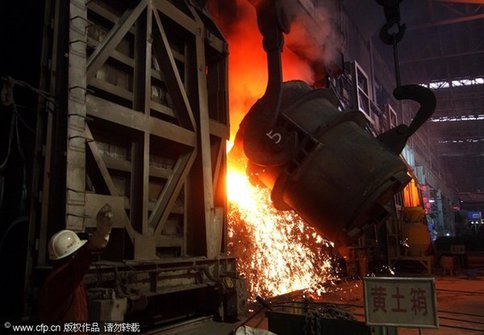
The spot price of iron ore will climb in the second half of the year if the Japanese and South Korean economies recover, and this possibility may force China to accept the 33-percent discount in full-year ore rates now being offered by global miners, industry experts said.
The spot price might exceed the annual negotiation price in the latter half of this year, driven by other countries' economic recovery and China's turning to iron ore at cash prices, said Yan Song, a fund manager at private equity firm Hao Capital who has been involved in steel industry investment for years.
Iron ore for immediate delivery advanced 4.6 percent to US$91 a ton last week, the highest since October last year, according to Metal Bulletin prices.
"Chinese steel mills are increasing the proportion of iron ore imports at cash price to enhance their power at the annual iron ore price talks," he said.
"The 33-percent discount offered by global miners is unlikely to change, but the pricing system may possibly change with time," he said.
Wang Xinguang, another fund manager at Hao Capital, said there was no need for China and other Asian countries to accept the current discount.
"The rule is expected to go in two or three years. China should sign a separate pricing system with global miners," he said. "Changing the annual iron ore price to a half-year based pricing system is preferable."
"It's like playing a game. If the iron ore prices continue to fall when the new system is adopted, Chinese steel mills can avoid the risk of high raw material prices," Yan said.
Steelmakers were locked into annual pacts when the price of iron ore fell. The spot price of iron ore is about US$80 a ton now, but prices topped US$120 a ton last year, Wall Street Journal reported on Monday.